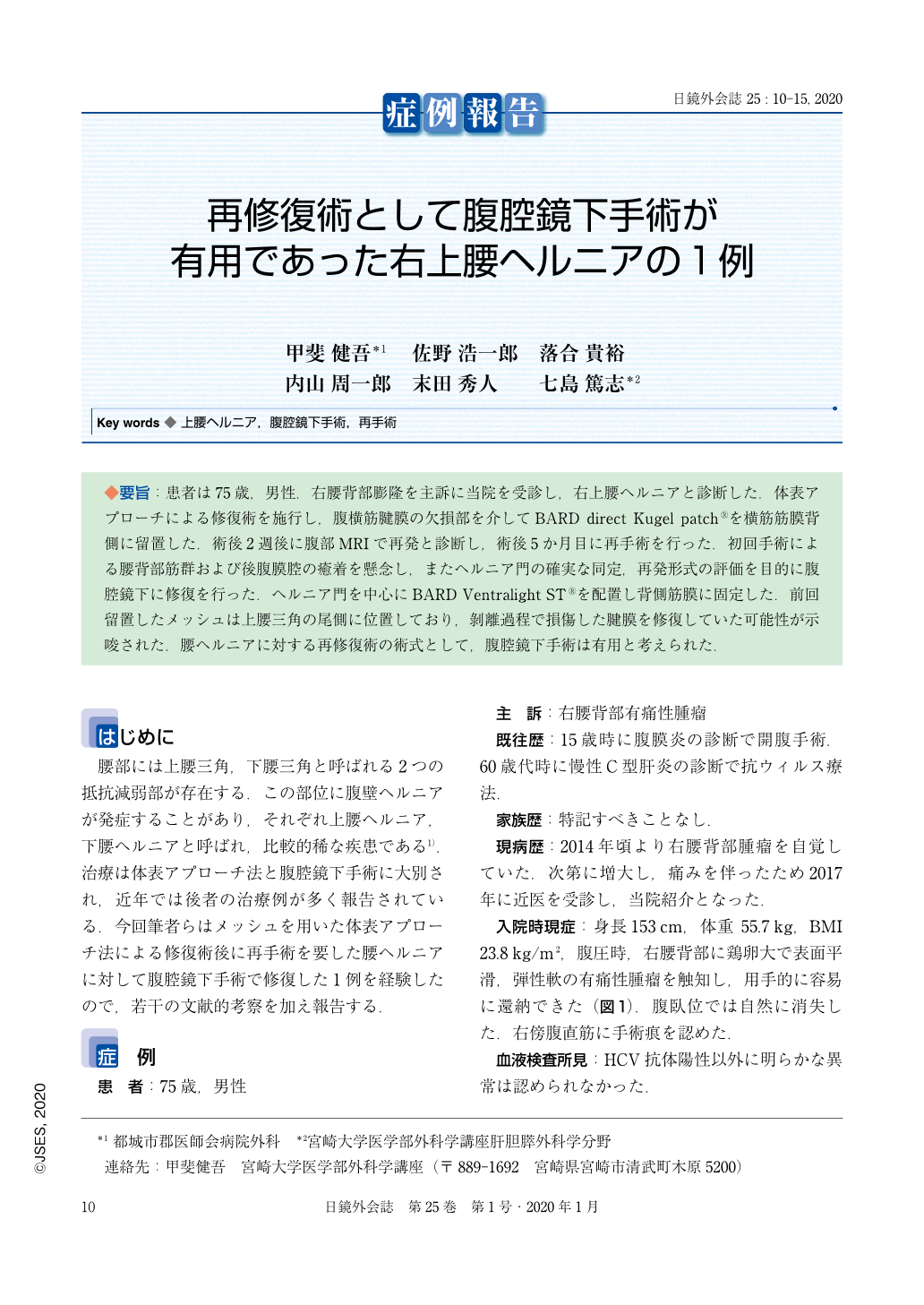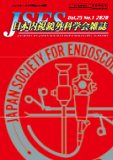Japanese
English
- 有料閲覧
- Abstract 文献概要
- 1ページ目 Look Inside
- 参考文献 Reference
◆要旨:患者は75歳,男性.右腰背部膨隆を主訴に当院を受診し,右上腰ヘルニアと診断した.体表アプローチによる修復術を施行し,腹横筋腱膜の欠損部を介してBARD direct Kugel patch®を横筋筋膜背側に留置した.術後2週後に腹部MRIで再発と診断し,術後5か月目に再手術を行った.初回手術による腰背部筋群および後腹膜腔の癒着を懸念し,またヘルニア門の確実な同定,再発形式の評価を目的に腹腔鏡下に修復を行った.ヘルニア門を中心にBARD Ventralight ST®を配置し背側筋膜に固定した.前回留置したメッシュは上腰三角の尾側に位置しており,剝離過程で損傷した腱膜を修復していた可能性が示唆された.腰ヘルニアに対する再修復術の術式として,腹腔鏡下手術は有用と考えられた.
A 75-year-old man was admitted to hospital with a palpable soft mass in the right lumbar area. Computed tomography and magnetic resonance imaging (MRI) revealed a superior lumbar hernia. The lumbar hernia was repaired using a BARD direct Kugel patch® for the defected aponeurosis of the transversus abdominis muscle. Two weeks after the operation, a dorsal palpable mass and MRI revealed that the lumbar hernia had been incompletely treated. Five months after the first surgery, laparoscopic surgery using an intra-abdominal approach was performed for the purpose of identifying the hernia orifice correctly, different from the initially treated site. Consequently, it was assessed that we misunderstood the aponeurosis injured in the process of separating the abdominal wall as the hernia orifice, on which the mesh was placed in primary operation. The postoperative course was uneventful, and the patient was discharged 7 days after surgery. There was no sign of recurrence for 15 months after the secondary operation. Laparoscopic surgery for lumbar hernia was found to be appropriate to address the hernia orifice.

Copyright © 2020, JAPAN SOCIETY FOR ENDOSCOPIC SURGERY All rights reserved.


